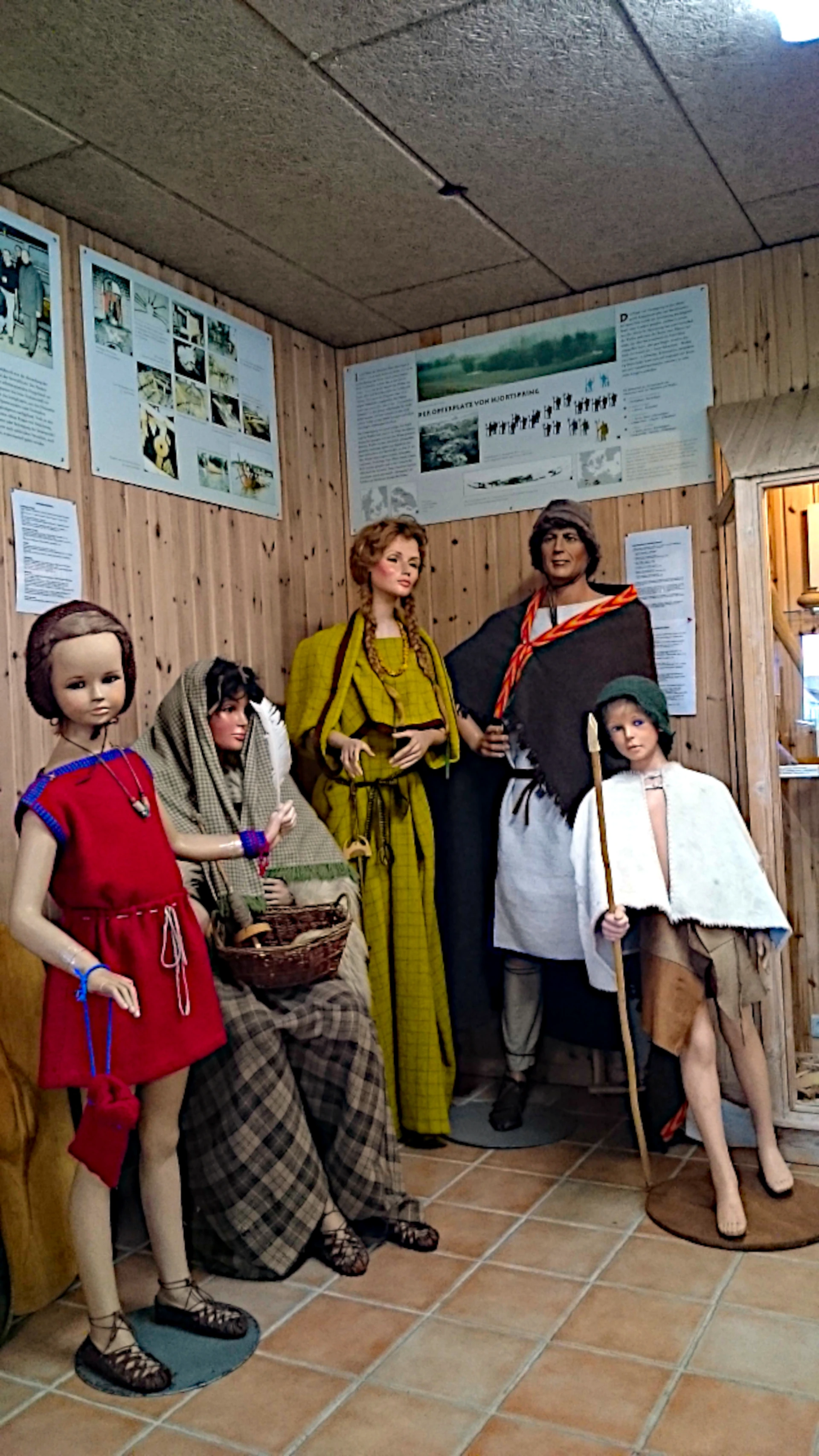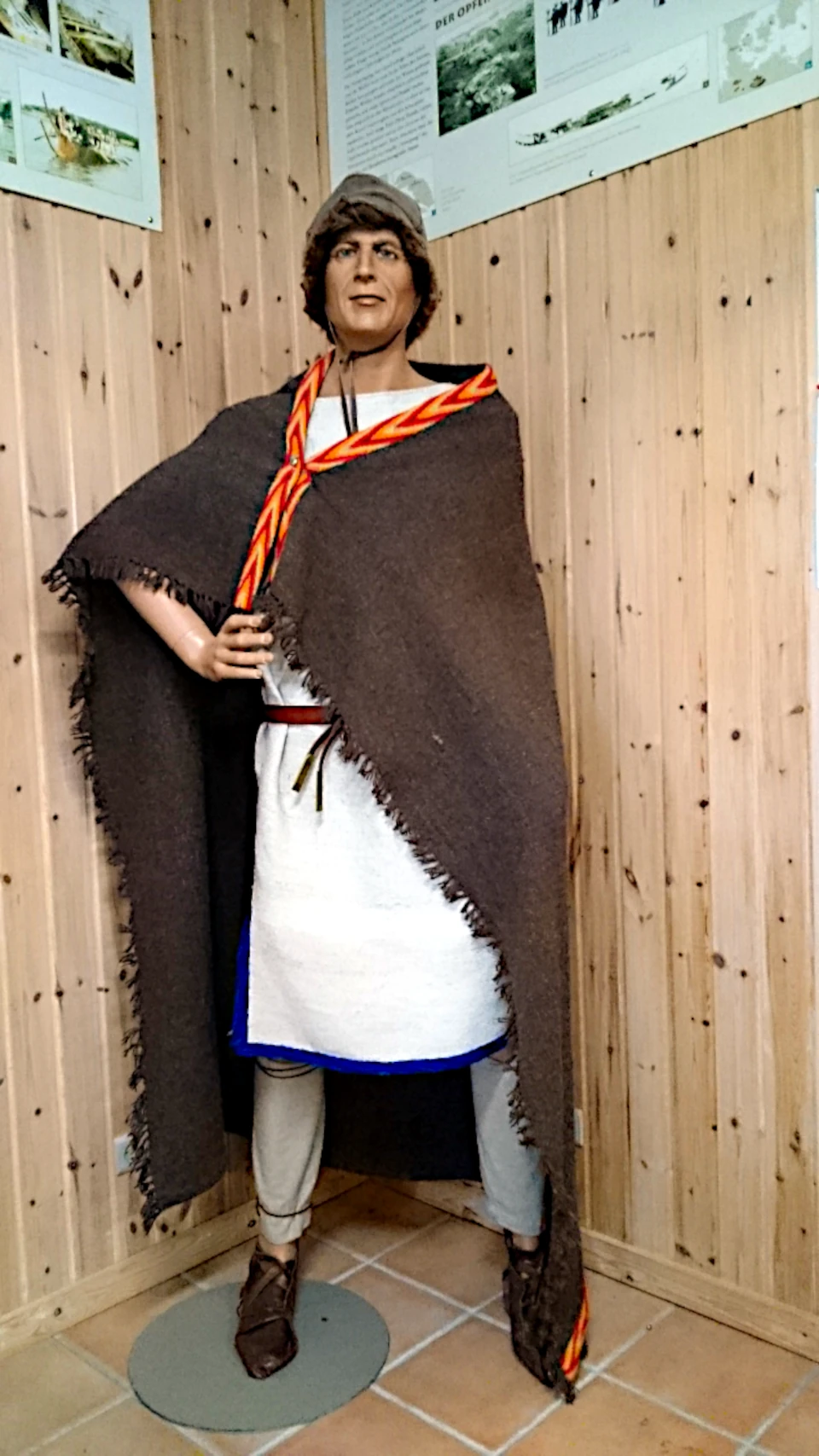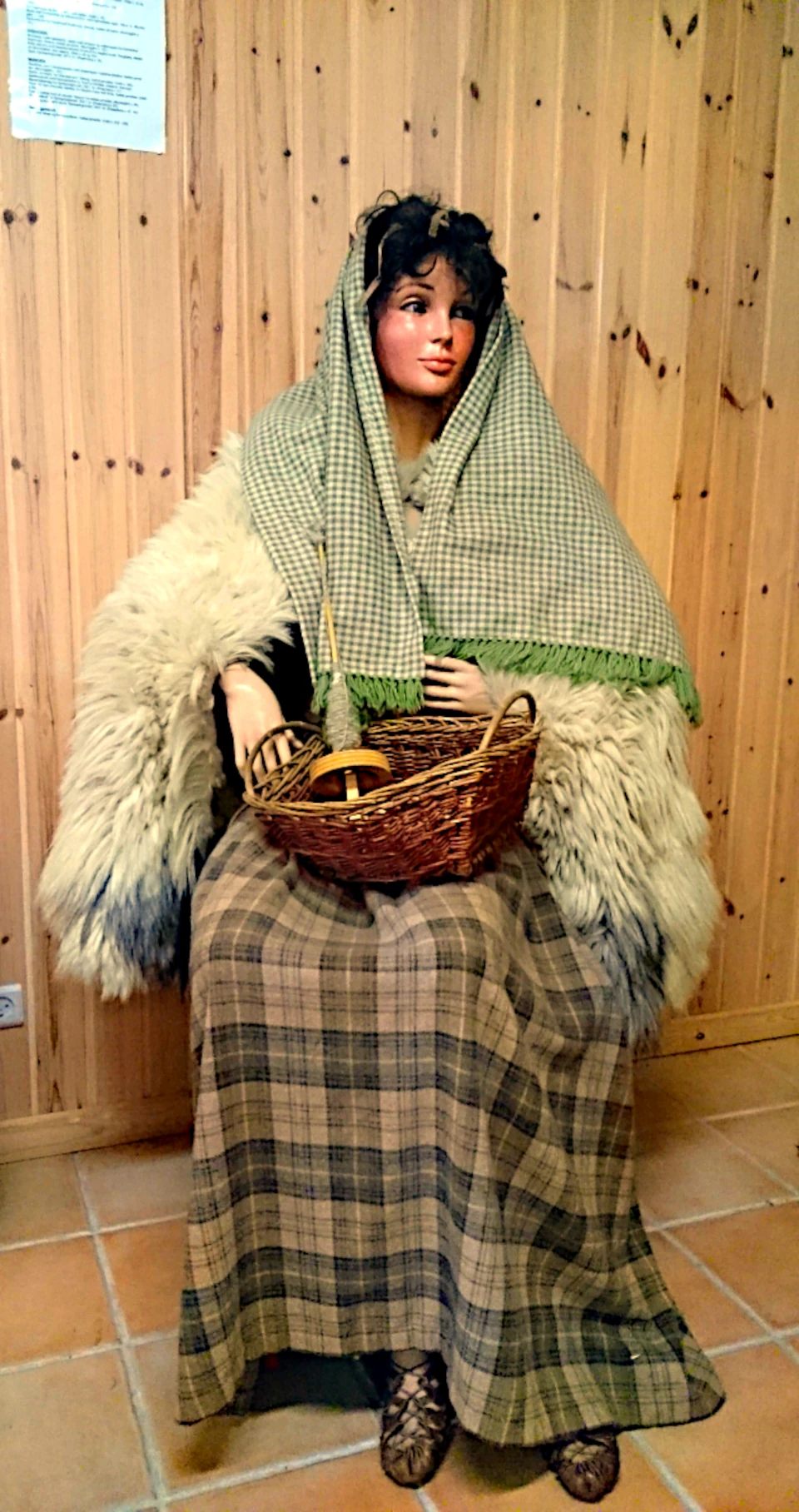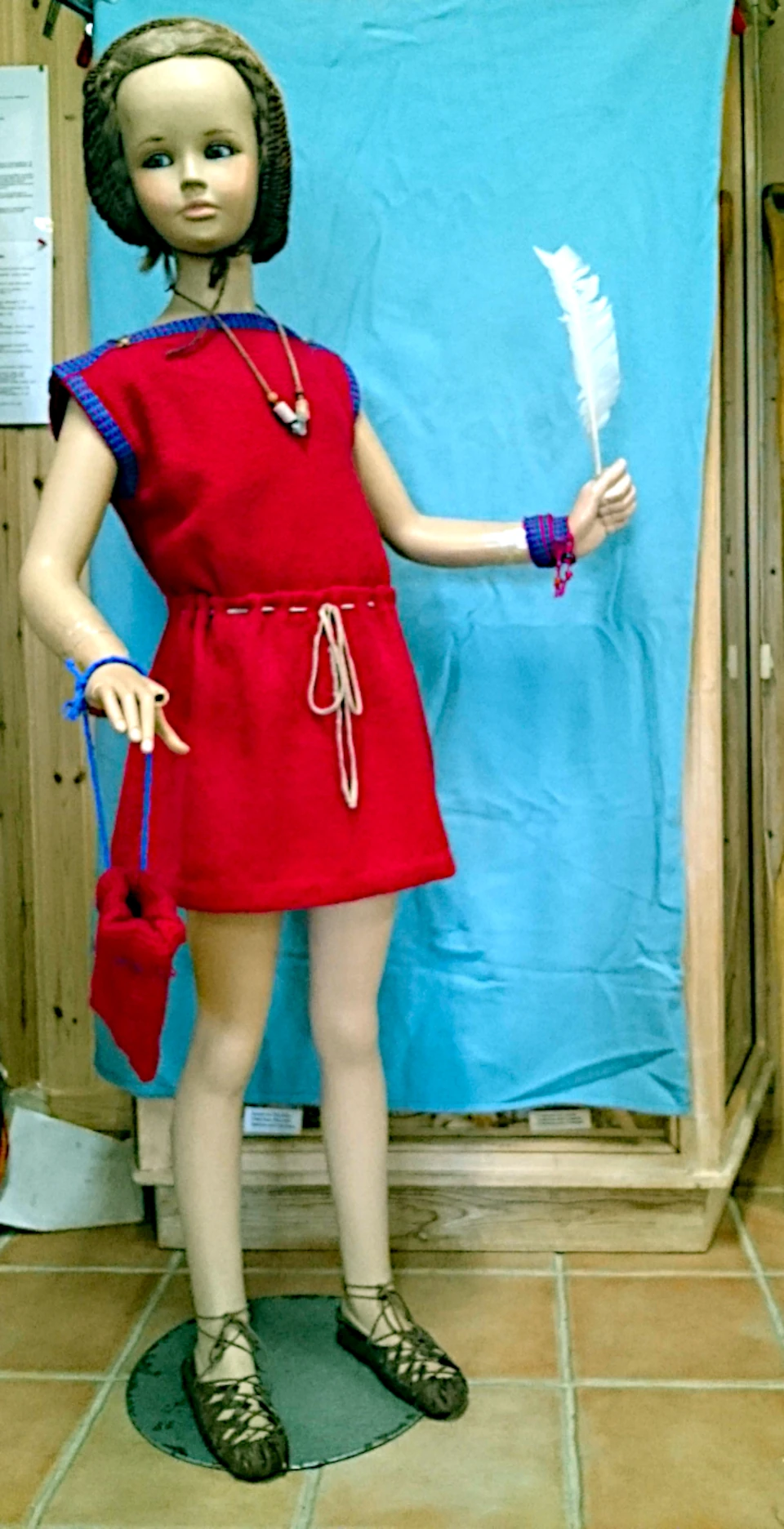The garments are based on finds from the Pre-Roman to Roman Iron Age, i.e. the time on both sides of the beginning of our era.
Finds from these periods are scarce, so the garments are composed of various bog finds from both Denmark and northern Germany.
Patterns and colours are chosen from the models.
The materials are, as far as possible, made using the same technique as the models.
The individual figures
The man
Leather cap, like the Tollund man's, with roll-up buttons in leather ties.
Celtic Iron Age. [Munksgård, p. 191].
Robe, sleeveless, from Obenaltendorf, Schleswig.
Celtic Iron Age. [Hald, p. 345].
Belt buckle and bronze pendant, find from Nordals.
Undated. Not a copy.
Strap end fitting.
Found in Hjortspring. 350 BC. [Rosenberg, p. 61].
Leg wrap, with 3-twisted woollen band, from Søgård bog near Skive.
Celtic Iron Age. [Hald, p. 30].
Cloak, many finds of woven ‘blankets’.
Celtic Iron Age. [Munksgård, p. 65].
Gooseneck needle.
Hjortspring find. 350 BC. [Rosenberg, p. 61].
The kid
Leather cape, white calfskin, closed with straps and roller buttons.
Damendorf, Ruchmoor, Schleswig, Celtic Iron Age. [Munksgård, p. 127].
Peasant's coat, (wrap) with leather ties, of cowhide.
Søgård bog, Daugbjerg. Reminiscent of Bronze Age, not dated. [Hald, p. 30 and 344].
Spear.
Found in Hjortspring. 350 BC. [Rosenberg, p. 45].
Seated woman
Fur cape from Huldremosen, (with comb).
Celtic Iron Age. [Munksgård, p. 136].
Leather ring on fur cape.
Celtic Iron Age. [Hald, p. 324].
Scarf with fringes and bird claw from Huldremosen.
Celtic Iron Age. [Hald, p.44 and 45].
Skirt from Huldremosen.
Celtic Iron Age. [Munksgård, p. 139].
Distaff.
Found at Hjortspring. 350 BC. [Rosenberg, p. 67].
Standing woman
Full dress (peblos) from Huldremosen, Djursland.
Celtic/Roman Iron Age. [Munksgård, p. 144].
Belt with fringes.
From relief on a burial site. Museum in Klagenfurt, Germany. [Hald, p. 377].
Knife.
Hjemsted, Skærbæk.
Comb, horn comb in pocket on sheepskin cape from Huldremosen.
Early Celtic Iron Age. [Hald, p. 187].
Ribbon in braid from female corpse in Haraldskær bog.
Vejle. 450 BC. [Ebbesen, p. 7]
.
Girl
Shoes
General, Arnitlund Mose and Rønbjerg Mose.
Celtic Iron Age. [Hald, s. 335/ 336].
Notes and remarks
In the Iron Age, sheep were also found with light-coloured wool. This could be dyed with plant dyes. 'opstad'-looms and circular looms produced fabrics with increasingly dense threads, often with four selvedges. Some fabrics have been rolled (washed with urine), resulting in shrinkage, and perhaps scratched, techniques that make clothes softer and warmer. Chequered fabrics and blouse and skirt fashions were typically Northern European. Bric woven ribbons were used in various ways and their manufacture is shown in Boye, The manufacture of sprang is best seen in Bonnier, and sprang is mentioned in Hald, p. 25 and 254.
The textiles in the exhibition are machine-woven, mainly of wool and dyed in a modern way. The costumes are hand-sewn with stitches that were also used in the Celtic Iron Age. [Hald, p.284].
Sponsors
Fa. Sandbeck, Nordborg.
Tøjeksperten- Herremagasinet, Nordborg.
Kvickly Nordborg.
Djons Møbelpolstring, Nordborg.
Dorit Hansen, Stenløse og
Eigil Ebsen, Femina Hårstudie, Vojens









